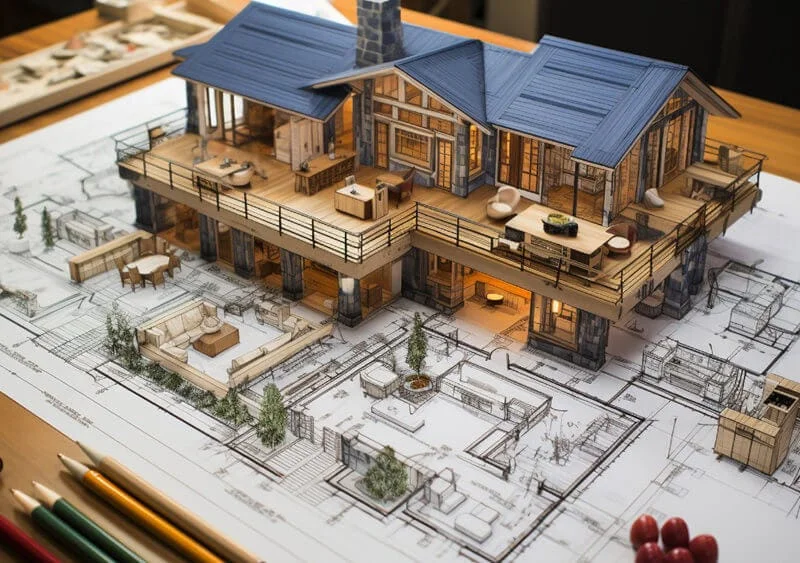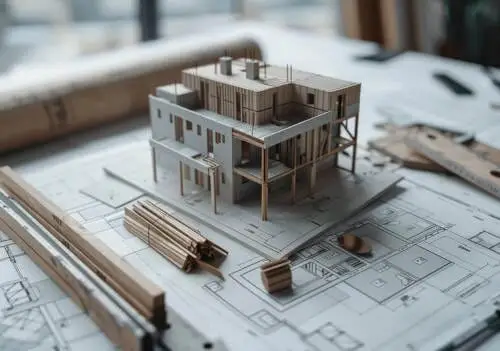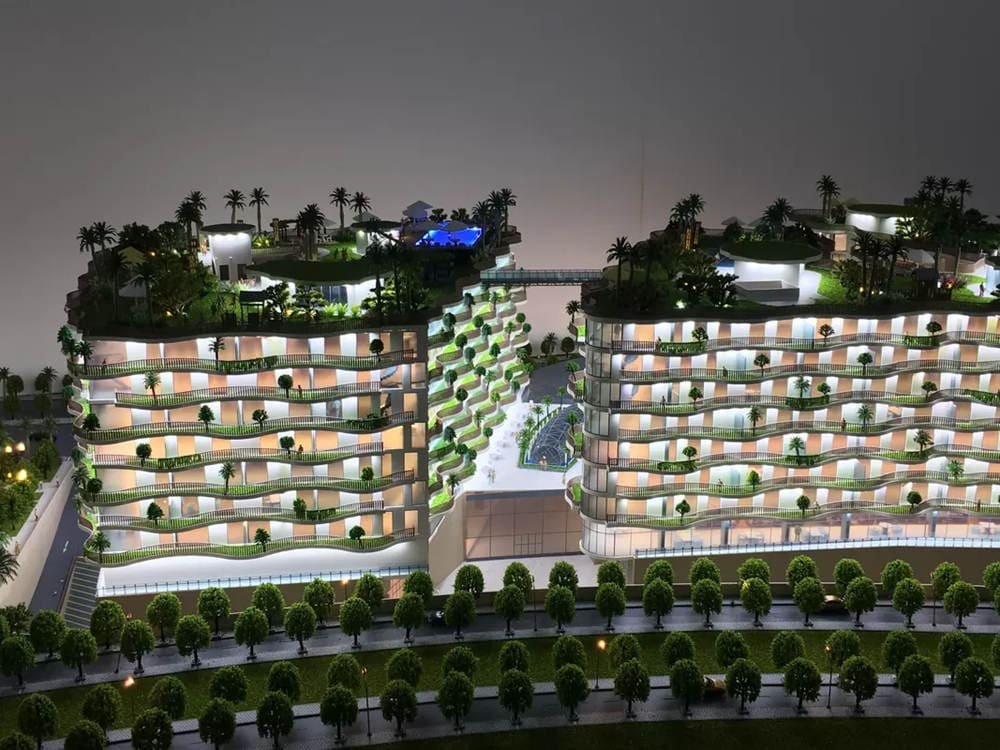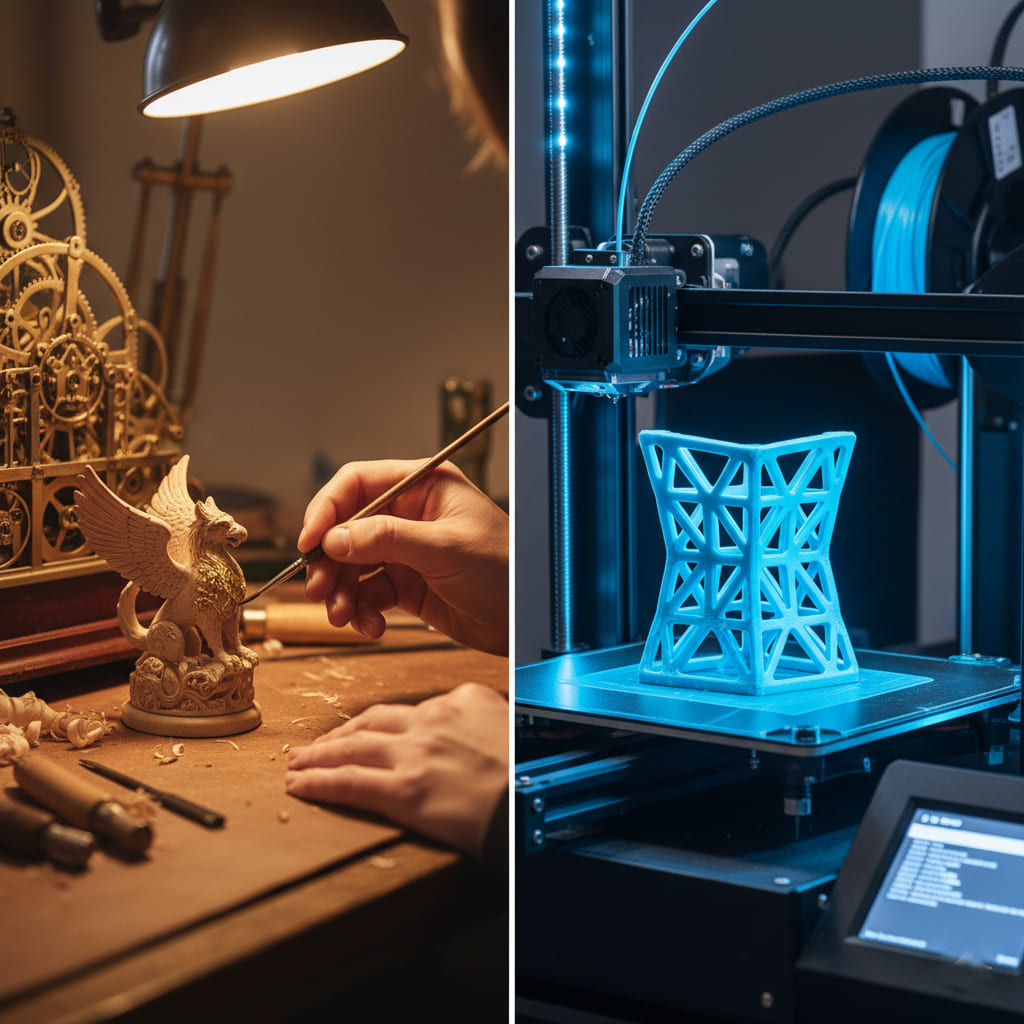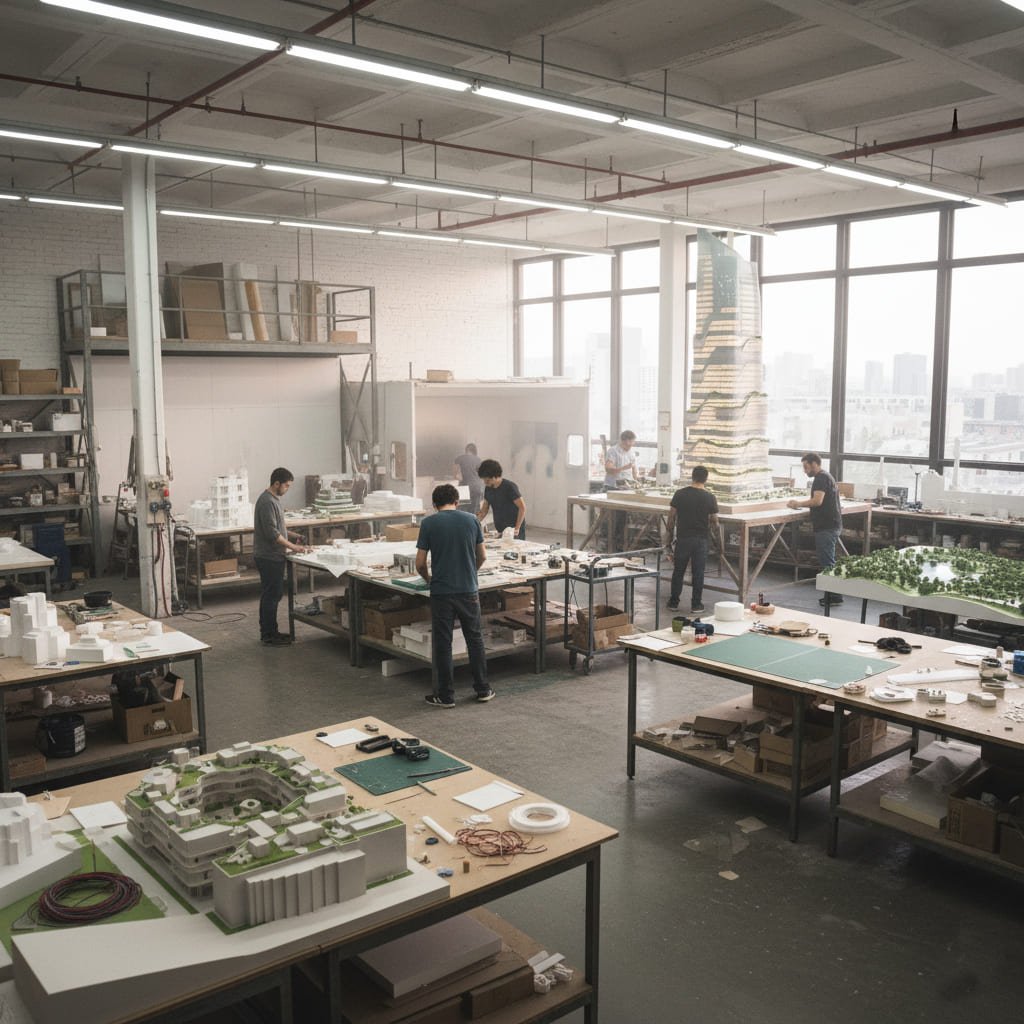No mundo dos modelos arquitetônicos, os edifícios são as estrelas do show. Mas o que realmente dá vida a um projeto, fundamentando-o em uma realidade verossímil, é a paisagem. Uma paisagem bem executada transforma um modelo de um simples estudo arquitetônico em um ambiente vivo., mundo respirando. É a textura da grama, o brilho da água, e o farfalhar das árvores que criam uma conexão emocional e vendem uma visão. Este guia investiga o reino cativante dos modelos de paisagem, explorando seu propósito, criação, e os segredos profissionais para alcançar o hiper-realismo. Descubra por que essas criações complexas são mais do que apenas exibições bonitas – elas são ferramentas poderosas de comunicação, planejamento, e inspiração.
Índice
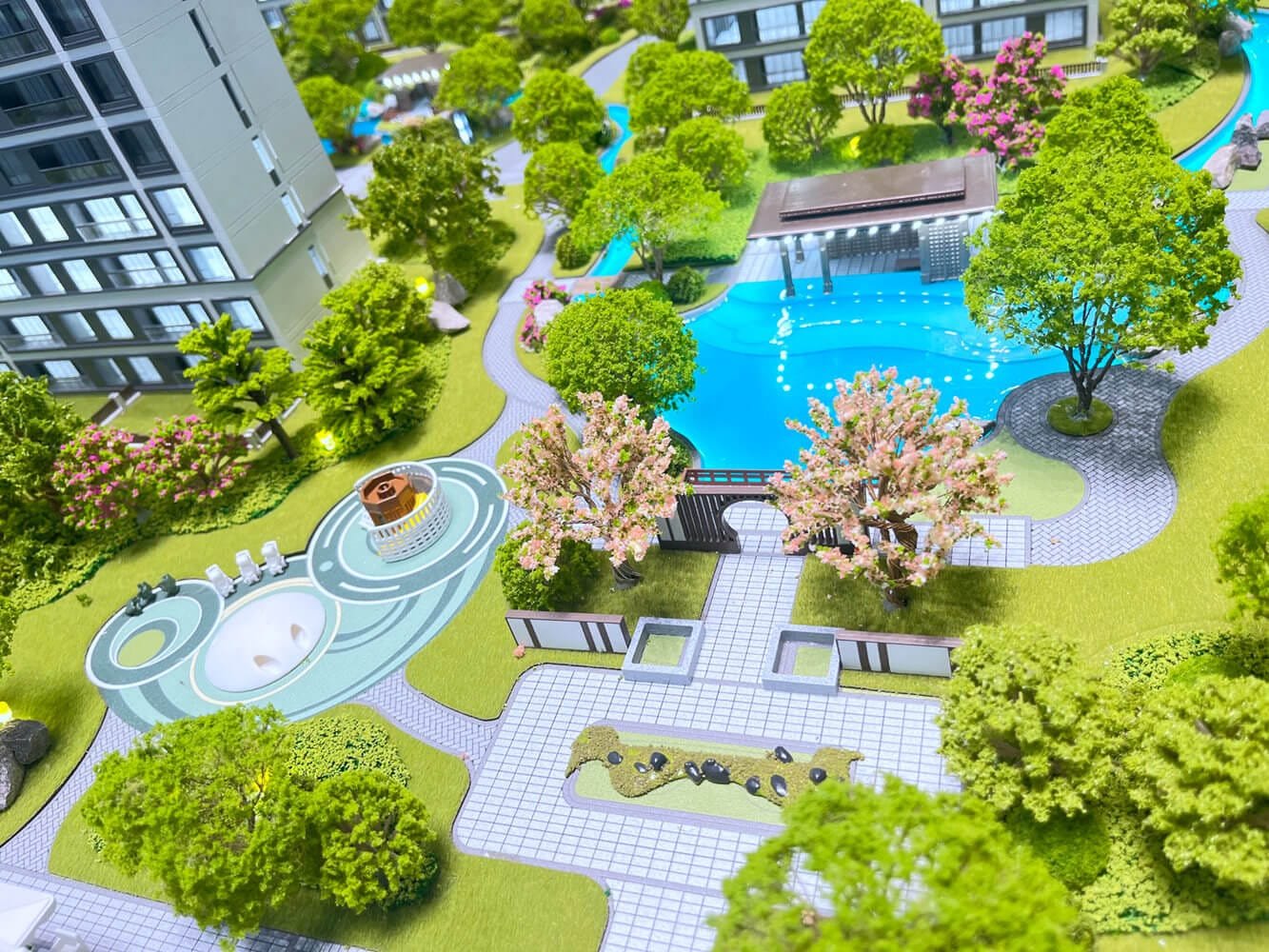
O que exatamente é um modelo de paisagem?
Um modelo de paisagem é uma representação tridimensional de uma área geográfica, local arquitetônico, ou ambiente urbano em escala reduzida. Esses modelos podem variar desde simples estudos de massa até representações altamente detalhadas da topografia., vegetação, edifícios, e infraestrutura. Eles servem como ferramentas inestimáveis para arquitetos, planejadores urbanos, arquitetos paisagistas, desenvolvedores, e educadores para comunicar conceitos de design, analisar relações espaciais, e envolver as partes interessadas. No contexto de um projeto maior, este é um componente chave do que chamamos de arte do modelo masterplan.
Os modelos de paisagem são feitos de vários materiais, incluindo papelão, espuma, madeira, plástico, e até componentes impressos em 3D. O nível de detalhe e realismo de um modelo depende da finalidade pretendida e dos requisitos do cliente. Alguns modelos se concentram em transmitir a massa e a forma geral de um projeto, enquanto outros replicam meticulosamente cada árvore, fachada do edifício, e luminária de rua. A arte e o artesanato envolvidos na criação de um modelo paisagístico de alta qualidade são verdadeiramente notáveis.
Por que os modelos paisagísticos são importantes na arquitetura e no design?
Os modelos paisagísticos desempenham um papel crucial no processo arquitetônico e de design por diversas razões.. Primeiramente, eles fornecem uma representação tangível e facilmente compreensível de um projeto que os desenhos e renderizações 2D não conseguem igualar. Clientes e partes interessadas podem passear pelo modelo, veja-o de diferentes ângulos, e obter uma compreensão abrangente das relações espaciais e da intenção do projeto. Este é um princípio fundamental que abordamos em nossa página principal, O melhor guia para modelos arquitetônicos de ponta.
Em segundo lugar, modelos de paisagem facilitam a colaboração e a comunicação entre equipes de design. Arquitetos, Engenheiros, arquitetos paisagistas, e outros consultores podem usar o modelo como ponto focal para discussões, identificar possíveis conflitos, e refinar o design de forma colaborativa. Este processo iterativo ajuda a garantir que o projeto final atenda às necessidades do cliente e se integre perfeitamente ao seu entorno..
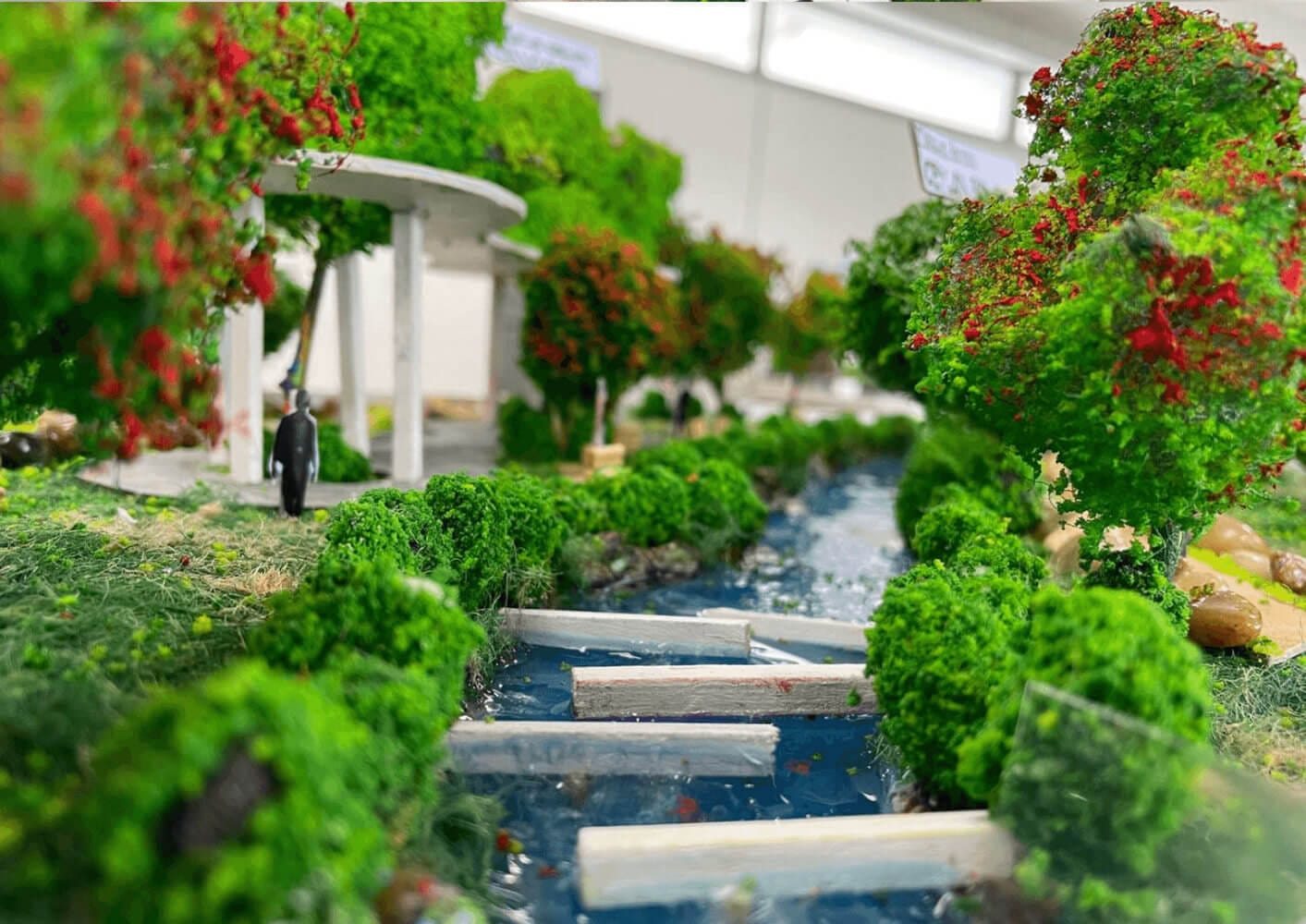
Quais são os diferentes tipos de modelos de paisagem?
Os modelos de paisagem vêm em vários tipos, cada um servindo a um propósito específico. Modelos topográficos concentre-se em representar as mudanças de terreno e elevação de um local. Esses modelos são essenciais para a compreensão dos padrões de drenagem, estabilidade de taludes, e o impacto visual de um projeto na paisagem. Modelos de arquitetura integrar edifícios e estruturas na paisagem, mostrando a relação entre o ambiente construído e seu entorno. Para projetos de grande escala, modelos de paisagem são usados para visualizar o plano diretor geral, incluindo vários edifícios, ruas, e espaços abertos.
Modelos conceituais são frequentemente criados durante os estágios iniciais do projeto para explorar diferentes opções de massa e layout. Esses modelos são normalmente menos detalhados e focam na forma geral e na organização espacial de um projeto.. Eles são ferramentas poderosas para conquistar júris, uma estratégia que exploramos em Como os modelos conceituais causam impacto vitorioso nas competições. Modelos de apresentação são altamente detalhados e realistas, destinado a impressionar clientes e partes interessadas e mostrar a intenção final do design. Esses modelos geralmente incluem paisagismo complexo, iluminação, e até pessoas e veículos em miniatura. E não vamos esquecer o crucial modelo de paisagem de arquitetura que preenche a lacuna entre a estrutura e seu ambiente.
Como são criados os modelos de paisagem? Um processo passo a passo
Criar um modelo de paisagem é um processo de várias etapas que requer habilidade, precisão, e imensa atenção aos detalhes. Começa com a coleta de informações sobre o site, incluindo levantamentos topográficos, desenhos arquitetônicos, e planos paisagísticos. Esses dados são então usados para criar um mapa base e determinar a escala apropriada para o modelo. Escolher a escala certa é um primeiro passo crítico, que detalhamos em nosso guia para Encontrando o equilíbrio perfeito entre escala e detalhe.
Próximo, o modelista constrói o terreno usando camadas de espuma, cartão, ou outros materiais. Edifícios e estruturas são adicionados, seguido por elementos paisagísticos, como árvores, arbustos, e características da água. Finalmente, detalhes como estradas, calçadas, postes de luz, e sinalização são incorporadas para dar vida ao modelo. Todo o processo geralmente envolve uma combinação de técnicas artesanais e métodos de fabricação digital, como corte a laser e impressão 3D. Essa mistura de técnicas é algo que exploramos em Artesanato Moderno vs.. Trabalho Manual Tradicional.
Quais materiais são usados na fabricação de modelos de paisagem?
A escolha dos materiais para um modelo paisagístico depende do nível de detalhe desejado, durabilidade, e orçamento. Para uma visão geral completa, você deve consultar nosso Guia abrangente para materiais de modelo. Os materiais comuns incluem:
- Placa de espuma: Leve e fácil de cortar, ideal para criar terrenos e formas de construção.
- Cartão: Versátil e barato, adequado para estudos de massa e modelos conceituais.
- Madeira: Durável e esteticamente agradável, frequentemente usado para rodapés e elementos estruturais.
- Plástico: Disponível em vários formatos, incluindo folhas, hastes, e tubos, para criar componentes detalhados.
- Acrílico: Transparente e forte, ideal para recursos hídricos e coberturas protetoras.
- 3Resinas impressas em D: Permitir a criação de formas complexas e intrincadas, uma tecnologia que exploramos em nosso Guia para impressão 3D.
- Materiais de paisagismo: Incluir árvores modelo, arbustos, grama, cascalho, e efeitos da água.
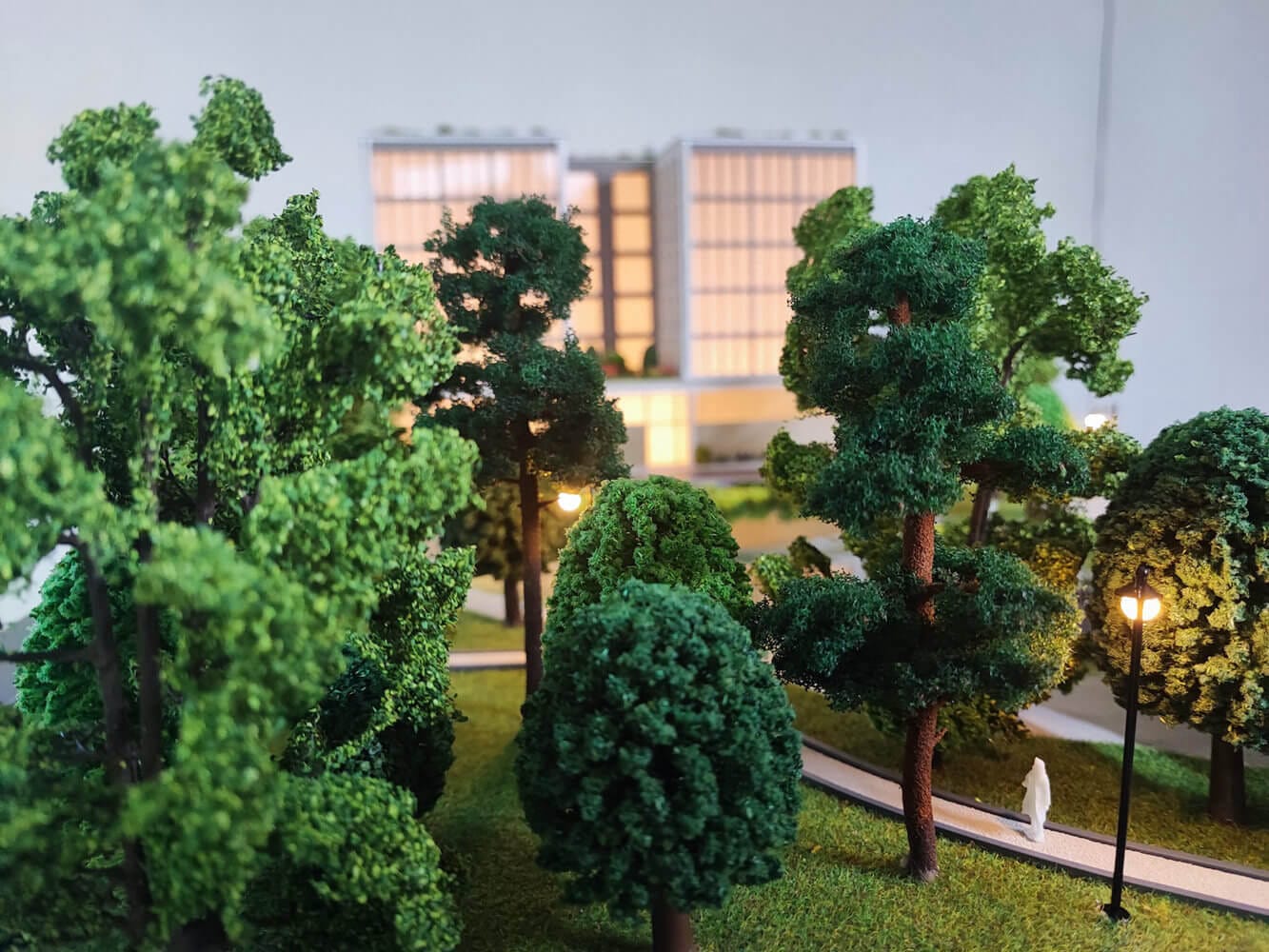
Como os modelos paisagísticos melhoram a comunicação e a colaboração?
Os modelos paisagísticos são ferramentas de comunicação poderosas que preenchem a lacuna entre os desenhos técnicos e a compreensão do cliente. Eles permitem que arquitetos e designers expliquem relações espaciais complexas, conceitos de design, e impactos ambientais de forma clara e acessível. Os clientes podem visualizar facilmente o projeto proposto, fazer perguntas, e fornecer feedback, levando a um processo de design mais colaborativo e informado. Isto é especialmente vital no setor imobiliário, onde uma visão clara pode impactar dramaticamente as vendas.
Além disso, modelos de paisagem facilitam a comunicação entre diferentes membros da equipe de design. Engenheiros, arquitetos paisagistas, e outros consultores podem usar o modelo como ponto de referência comum para discutir questões técnicas, identificar possíveis conflitos, e coordenar seu trabalho. Esta abordagem colaborativa ajuda a garantir que o projeto final esteja bem integrado e atenda às necessidades de todas as partes interessadas. E se você precisar de um simples paisagem modelo para transmitir seu ponto de vista, há muitas opções para isso também.
Qual é o papel da tecnologia na criação de modelos paisagísticos?
A tecnologia revolucionou o campo da criação de modelos paisagísticos, permitindo maior precisão, eficiência, e realismo. Design auxiliado por computador (CAD) software permite que criadores de modelos criem representações digitais precisas de locais e edifícios, que pode então ser usado para gerar padrões de corte para cortadores a laser e impressoras 3D.
A tecnologia de corte a laser permite a fabricação rápida e precisa de componentes complexos de vários materiais, como placa de espuma, acrílico, e madeira. 3A impressão D permite a criação de formas complexas e orgânicas, como árvores, esculturas, e características topográficas. Estas tecnologias não só aceleram o processo de criação de modelos, mas também expandem as possibilidades de criação de representações altamente detalhadas e realistas.. A aquisição dessas tecnologias é um dos principais motivos pelos quais muitas empresas exploram A vantagem da China para seus projetos.
Quais são algumas aplicações de modelos de paisagem no mundo real?
Modelos de paisagem são usados em uma ampla gama de aplicações, incluindo:
- Projeto arquitetônico: Visualizando formas de construção, relações espaciais, e integração de sites.
- Planejamento urbano: Analisando o impacto dos desenvolvimentos propostos no tecido urbano e no meio ambiente.
- Arquitetura paisagística: Projetando parques, jardins, e outros espaços ao ar livre.
- Desenvolvimento imobiliário: Marketing e venda de propriedades para potenciais compradores.
- Avaliação de impacto ambiental: Simulação dos efeitos dos projetos nos recursos naturais e nos ecossistemas.
- Engajamento público: Comunicar projetos complexos à comunidade e coletar feedback.
- Exposições de museu: Criação de displays interativos que educam e envolvem os visitantes.
- Cinema e televisão: Construindo cenários em miniatura para efeitos especiais e narrativa visual.
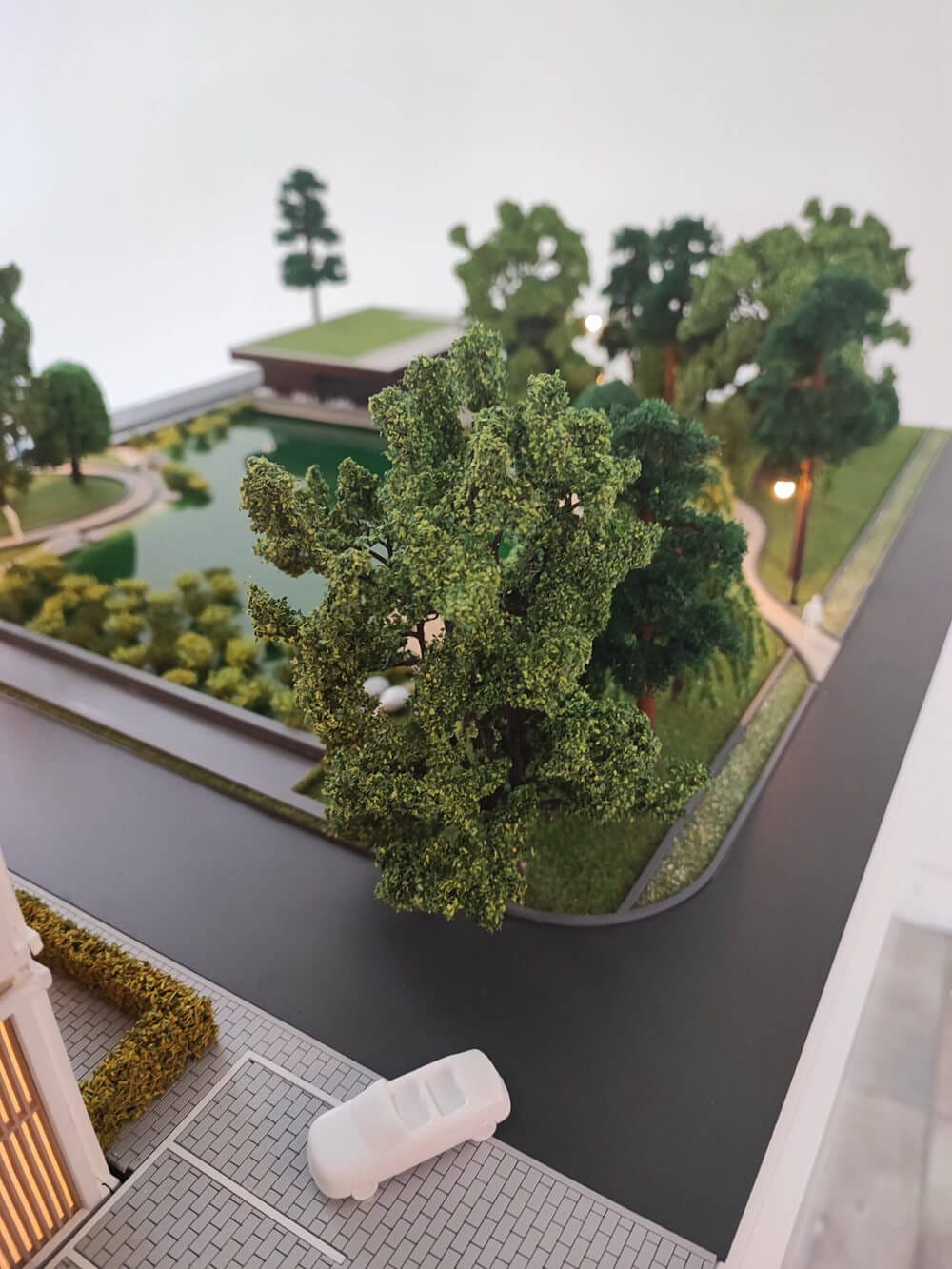
Como escolher o criador de modelo de paisagem certo?
Selecionar o criador de modelos paisagísticos certo é crucial para garantir o sucesso do seu projeto. É uma decisão significativa que requer uma verificação cuidadosa. Considere os seguintes fatores:
- Experiência e conhecimento: Procure um fabricante de modelos com histórico comprovado de criação de modelos de alta qualidade para projetos semelhantes.
- Portfólio: Revise seu portfólio para avaliar seu trabalho artesanal e atenção aos detalhes.
- Comunicação e colaboração: Escolha um modelista que seja responsivo, comunicativo, e disposto a colaborar com você durante todo o processo. Isto é especialmente crítico quando gerenciando projetos modelo no exterior.
- Tecnologia e equipamentos: Garantir que eles tenham acesso à tecnologia e equipamentos mais recentes para produzir modelos precisos e detalhados.
- Orçamento e cronograma: Discuta antecipadamente seus requisitos de orçamento e cronograma e garanta que o criador do modelo possa entregar dentro dessas restrições.
Para um guia de verificação completo, criamos uma lista de 10 Perguntas críticas a serem feitas antes de contratar um criador de modelos.
Quanto custa um modelo paisagístico?
O custo de um modelo paisagístico varia amplamente dependendo de fatores como tamanho, complexidade, nível de detalhe, Materiais, e a experiência do modelista. Modelos conceituais simples podem custar algumas centenas de dólares, enquanto modelos de apresentação altamente detalhados podem custar dezenas de milhares de dólares ou mais.
Para obter uma estimativa precisa, é essencial fornecer ao modelista informações detalhadas sobre o seu projeto, incluindo plantas do local, desenhos arquitetônicos, e nível de detalhe desejado. Também é importante considerar o valor que um modelo de alta qualidade pode trazer ao seu projeto, como melhor comunicação, tomada de decisão aprimorada, e aumento da satisfação do cliente. Para uma análise completa, por favor consulte nosso guia, Desembalando o 5 Fatores -chave do preço do modelo arquitetônico.
| Tipo de modelo | Custo Aproximado | Descrição |
|---|---|---|
| Modelo Conceitual/Massivo | $500 – $3,000 | Representação básica de formas de construção e layout do local. Detalhe limitado. |
| Modelo arquitetônico detalhado | $3,000 – $15,000+ | Inclui detalhes significativos da construção, paisagismo, e recursos do site. |
| Modelo de Plano Diretor/Grande Escala | $10,000 – $50,000+ | Representa uma grande área com vários edifícios, infraestrutura, e paisagismo detalhado. |
| Modelo de Apresentação/Vendas | $5,000 – $20,000+ | Modelo de alta qualidade com detalhes excepcionais, iluminação, e acabamento para apresentações e vendas para clientes. |
Quais são as últimas tendências na criação de modelos paisagísticos?
O campo da criação de modelos paisagísticos está em constante evolução, com o surgimento de novas tendências que ultrapassam os limites do realismo e da interatividade. Algumas das últimas tendências incluem:
- Integração de modelos digitais e físicos: Combinando modelos físicos com realidade aumentada (Ar) e realidade virtual (Vr) tecnologias para criar experiências imersivas e interativas.
- Uso de materiais sustentáveis: Empregar materiais e processos ecológicos para reduzir o impacto ambiental da fabricação de modelos.
- Modelos cinéticos: Incorporando peças móveis e elementos dinâmicos para simular processos do mundo real, como o fluxo de tráfego e o movimento da água.
- 3Paisagens impressas em D: Utilizando técnicas avançadas de impressão 3D para criar terreno e vegetação altamente detalhados e realistas.
- Iluminação e som interativos: Adicionando efeitos de iluminação estratégicos e paisagens sonoras para melhorar o realismo e o envolvimento dos modelos.
Exploramos essas novas fronteiras emocionantes em nosso artigo, O futuro da fabricação de modelos: Tecnologia interativa e AR.
Conclusão: O poder duradouro dos modelos paisagísticos
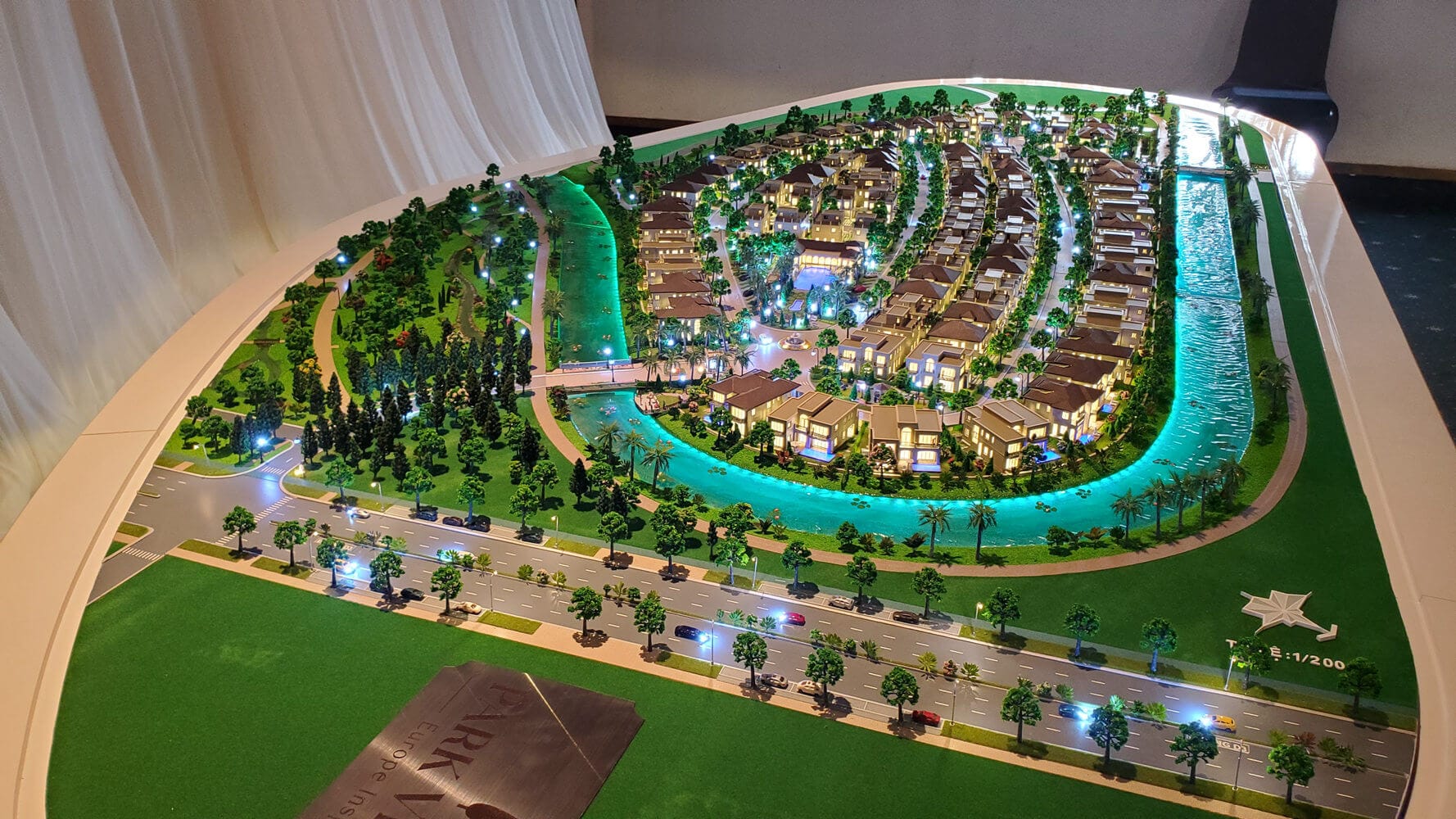
Os modelos paisagísticos continuam sendo uma ferramenta indispensável para arquitetos, designers, e qualquer pessoa que procure visualizar e compreender o ambiente construído e natural. Apesar dos avanços na tecnologia digital, a natureza tátil e tridimensional dos modelos físicos oferece uma maneira única e envolvente de explorar relações espaciais, comunicar ideias de design, e inspirar a criatividade. À medida que a tecnologia continua a evoluir, podemos esperar modelos de paisagem ainda mais inovadores e imersivos que confundem os limites entre o real e o virtual. Quer seja um detalhado modelo de paisagem de uma cidade extensa ou de um simples modelo de paisagem de um único canteiro de obras, esses mundos em miniatura têm o poder de moldar nossa compreensão do mundo que nos rodeia.
Takeaways -chave:
- Os modelos de paisagem fornecem uma maneira tangível de compreender as relações espaciais.
- Eles são cruciais para a comunicação em arquitetura e design.
- Existem vários tipos de modelos, servindo a propósitos diferentes.
- A criação de modelos é um processo detalhado que envolve diversos materiais e tecnologias.
- Os modelos melhoram a colaboração e a compreensão do cliente.
- Escolher o modelista certo é vital para o sucesso do projeto, e é um processo que deve ser feito com cuidado, especialmente se o modelo precisar ser enviado, conforme detalhado em nosso guia para embalagem e transporte.
- Os custos variam amplamente dependendo da complexidade e dos detalhes.
- O campo está evoluindo com novas tendências em tecnologia e sustentabilidade.
Pronto para dar vida à sua visão com um modelo de paisagem cativante? Contate-nos hoje para discutir seu projeto e saber como nossos criadores de modelos especializados podem ajudá-lo a criar uma representação impressionante e informativa de seu projeto.


